Mind Science Foundation
A Legacy of Science, Communication, and Exploration
The Mind Science Foundation began as a small research institute established by Tom Slick in 1958 to scientifically study the vast frontiers of the human mind. Slick had glimpsed some of the far reaches of that frontier during his legendary expeditions in the Himalayas. An oilman and entrepreneur who had established two scientific institutes while still in his 20s, Slick was searching those remote mountains for an elusive creature purported to be a missing link in the human chain of evolution. The Nepalese called it a meh-teh, “man that is not a man,” Western explorers called it the Yeti. While Tom Slick did not find his quarry during his adventures in Nepal and Tibet in 1956 and 1957, he did find a mysterious large footprint in the snow that fueled his continued interest in the Yeti. Its plaster cast became a favorite centerpiece on his dining table in San Antonio, Texas, and stories about his travels through the Himalayas often centered on the lamas he met there, some with abilities that seemed to defy explanation by Western science. He decided to establish his third research institute—the Mind Science Foundation—and charged it with scientifically investigating unexplained human abilities and phenomena.

“I feel that the human mind has tremendous unexplored potential, and I want to go about the discovery of that potential in a scientific way.” -Tom Slick, 1958
Over the decades, the Mind Science Foundation has evolved into a research organization that focuses on neuroscience, a field that uses the modern technology of the 21st century to peer inside the human brain in important ways. It continues to embrace its founder’s curiosity and belief that scientific discovery is an essential path that leads to an improved world. Here’s a timeline that shares some of the scientific paths taken by MSF over nearly 70 years of its existence:
1958-1962
Founder Tom Slick funded early projects to study the mysteries of telepathy, biofeedback, and psychokinesis. Buddhist monks, self-proclaimed psychics, and practitioners of ancient qigong were early subjects, and Dr. E. Wilford Hahn was hired as MSF’s first executive director. Besides his interest in mysteries of the human mind, Tom Slick spearheaded the development of native grasses in South Texas and the Brangus breed of cattle (a cross between Scottish Angus and the hearty Brahma cattle from India that could tolerate heat and drought), and the lift-slab method of construction.
1962-1982
Following Tom Slick’s death in 1962, oilman, entrepreneur, and close friend, C.V. Wood, Jr., financed the Foundation for a while and relocated it to Los Angeles, California, while the Slick estate was being settled. In the early 1970s Tom Slick, Jr., a recent graduate of Yale, worked with Wood, businessman William T. Rhame, and attorney Jesse Oppenheimer to establish the Tom slick Memorial Trust for the Mind Science Foundation. It called for the appointment of three institutional trustees, representing Trinity University, University of Texas Health Science Center, and Southwest Research Institute to help oversee the endowment. In the 1970s Tom Slick, Jr., moved the Mind Science Foundation back to San Antonio, and hired three fulltime scientists (Dr. William Braud, Dr. Marilyn Schlitz, Dr. Helmut Schmidt) to continue parapsychology research, exploring the far reaches human potential and ways it might be harnessed.

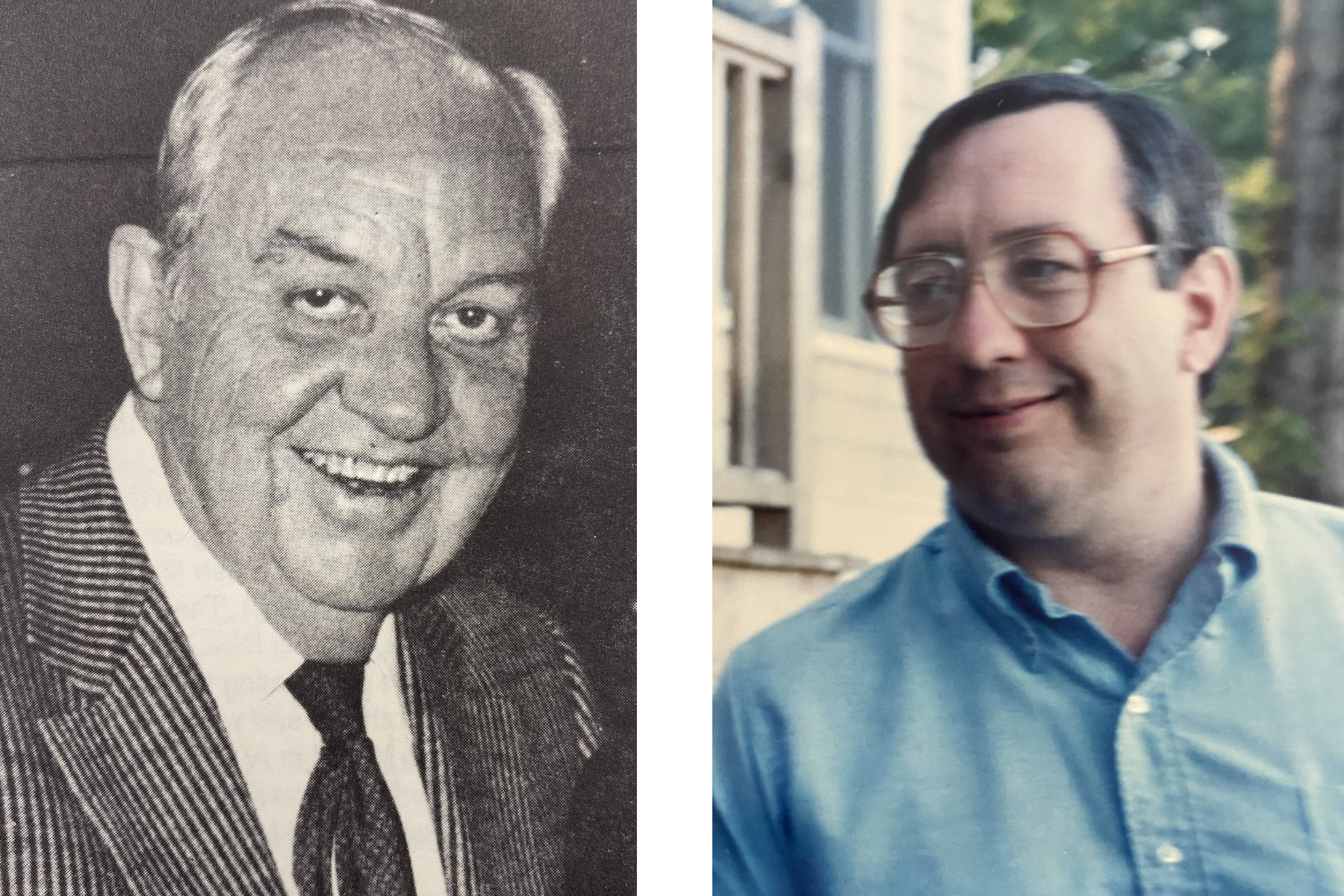
C.V. Wood, Jr. (Left) Tom Slick, Jr. (Right)
1983-1999
In 1983, Catherine Nixon Cooke, a niece of MSF founder, was hired as executive director and charged with building a strong board of directors, creating a community support base, and expanding its research. City leaders including John Kerr, John “Chico” Newman, Joci Straus, Christopher “Kit” Goldsbury, Ruth Bowman Russell, Cappy Lawton, and others served as early board members and chairs, helping shape a modern vision that maintained MSF’s original interest in the mysteries of the mind while introducing new avenues of related research. In-house research was redesigned around a Scientist-in-Residence program, with Dr. John Murray, collaborating with brain mapping researchers Dr. Peter Fox and Dr. Paul Ingmundson at UT Health to study the effects of television violence on young children. Studies of the power of the mind in the healing process (Norman Cousins, Dr. Herbert Benson) resonated with Tom Slick’s early observations of lamas in the Himalayas. A membership program and speakers’ series were established; audiences grew from 50 people who met in small venues, to more than 400 attendees. Topics ranged from how scientists search for cures (Dr. Jonas Salk on developing the polio vaccine), perseverance and human potential (Sir Edmund Hillary on climbing Mt. Everest), and the fascinating world of dreams (Steven LaBerge, founder of the Lucidity Institute at Stanford University). The Foundation established the Imagineer Awards, awarding stipends to individuals who had harnessed creativity to create unique solutions to community problems, hosted one of the early international Alzheimer’s Disease conferences (chaired by Dr. George Glenner), and as the new century approached, hosted “Mental Fitness for the 21st Century”, a consortium of international thinkers held at Trinity University, chaired by Peter C. Goldmark, President of the Rockefeller Foundation, that resulted in a PBS documentary.
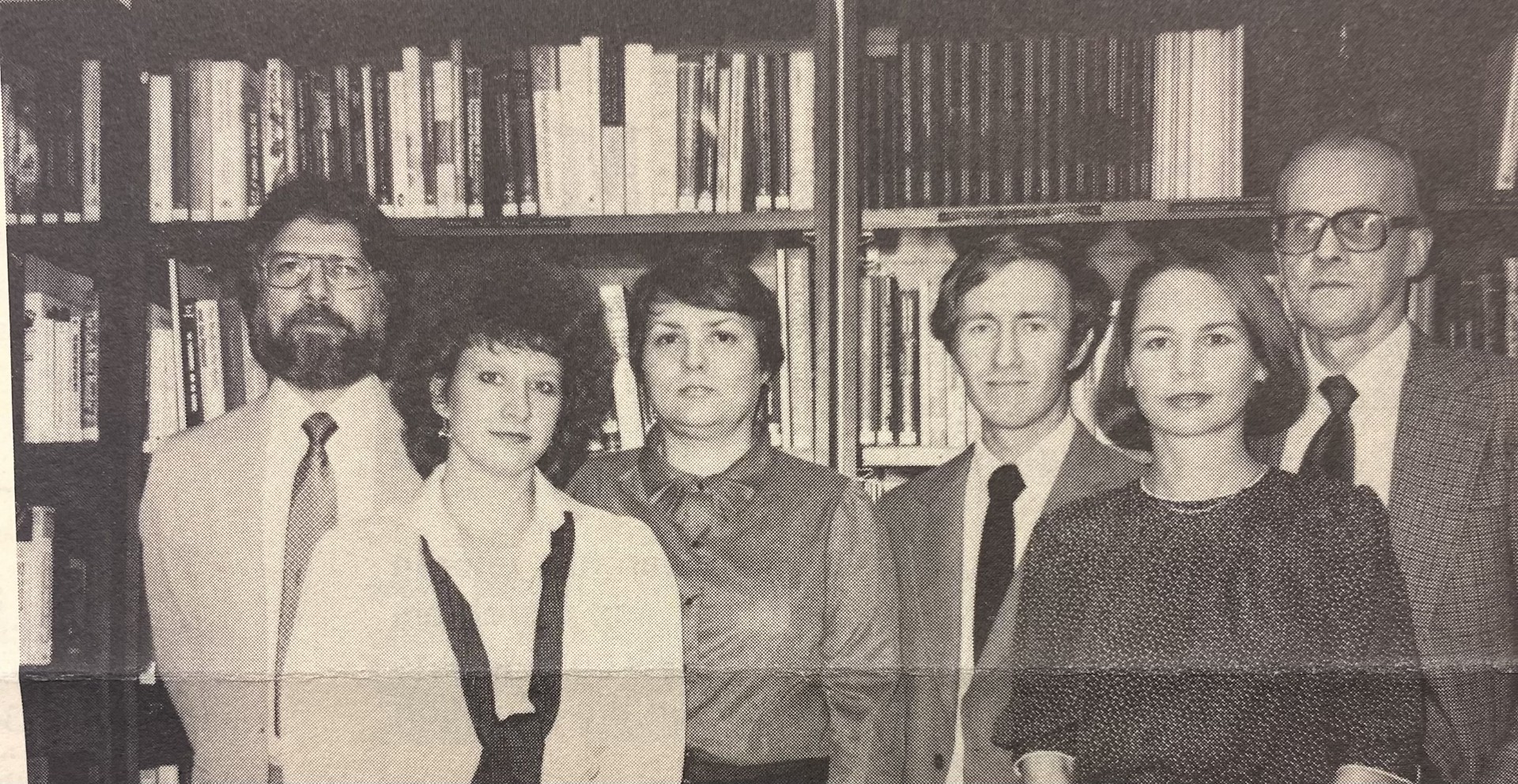
Mind Science Foundation Staff in the early 1980s. Pictured left to right: Dr. William Braud, Marilyn Schlitz, Diane Morton Holmes, John Collins, Catherine Nixon Cooke, Dr. Helmut Schmidt.
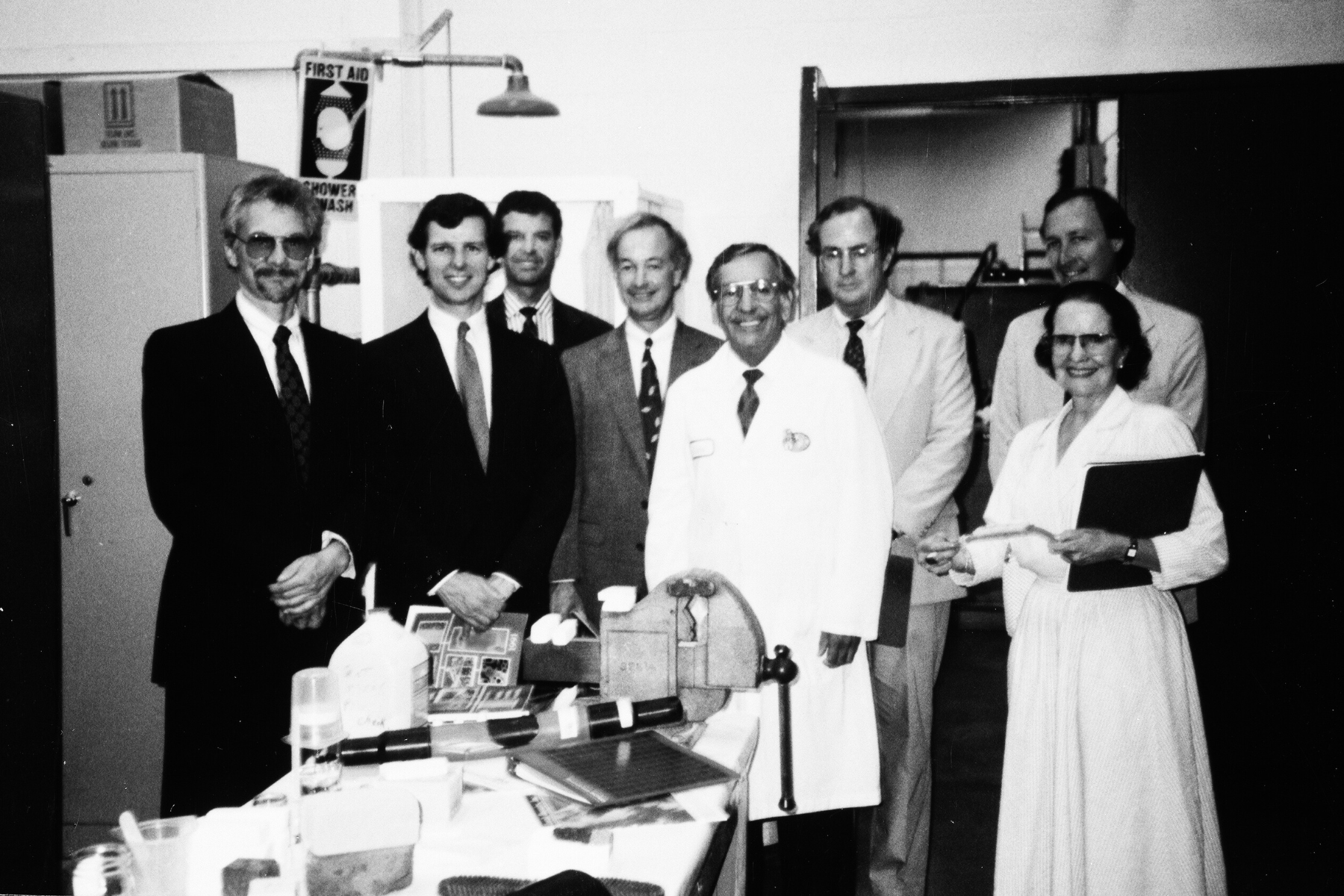
MSF Board meeting in the early 1990s at Southwest Research Institute. Pictured left to right: Dr. John Vandeberg, John “Chico” Newman, Peter Selig, Jamie Smith, Dr. Bill Mallow, Bob Sohn, John Kerr, and Polly Zachry.
2000-2010
With new technologies emerging in the new century, brain mapping studies expanded with several projects directed by Drs. Fox and Ingmundson. Beth Costello served as executive director in the early years of the decade, and Bob Cocke and John G. “Sandy” McNab were visionary board chairs, building the Foundation’s membership and initiating a strategic plan for future growth. Joseph Dial served as executive director, establishing important new relationships with scientific institutes around the country, including the Paul Allen Institute, the Institute of Noetic Sciences, and the Aspen Institute for Integrative Health. The Tom Slick Research Awards in Consciousness were established in 2004 to concentrate on the emerging field of neuroscience, and prominent scientists from around the world received support. The Speakers Series continued to focus on a wide range of topics, attracting more than 400 people to lectures in the newly renovated Pearl Stable. “Tom Slick Mystery Hunter,” a biography of MSF’s founder, written by Catherine Nixon Cooke was published in 2005. Dr. Paul Ingmundson became MSF’s executive director, and the Foundation sponsored an “International Consciousness Research Retreat” in Aspen, Colorado, in 2008.
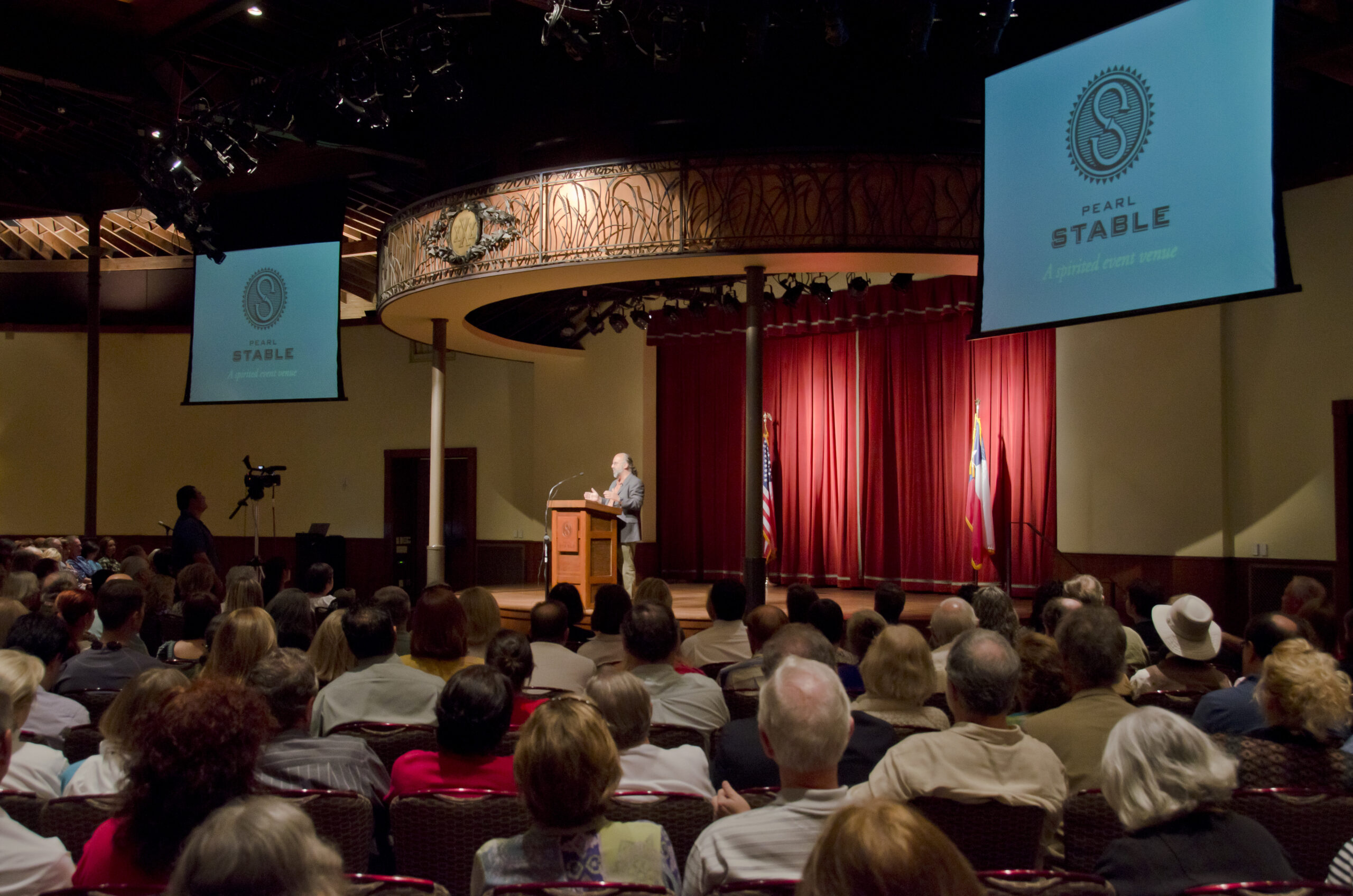
The Speaker Series events were held at Pearl Stables.
2010-2025
The Tom Slick Research Awards gained momentum under the leadership of Dr. Ingmundson, and the Foundation’s reach extended far beyond Texas. In 2012, MSF organized “Understanding Consciousness: Neuroscientific Approaches and Future Directions”, a symposium of international participants, in Rockland, Maine. That same year, Meriam Musa Good became the Foundation’s executive director. In 2013 and David Eagleman, PhD (based at Stanford University, author of The Future of Being Human, and host of the PBS series The Brain) became its Chief Science Advisor, charged with guiding MSF’s research agenda. The Foundation held a 2017 conference with Dr. Eagleman in San Antonio (“Emerging Technologies and the Future of Being Human”), and in 2018 its chair of the board, Alan Kramer, led the creation of the “Brainstorm Neuroscience Pitch Competition.” Designed not only to recognize and support neuroscience research, it requires that competitors also excel at science communication. Each year finalists travel to San Antonio, where MSF members and the public hear about some of the most exciting neuroscience research underway in the world. An updated second edition of Cooke’s biography, re-titled In Search of Tom Slick: Explorer and Visionary, was published by Texas A&M University Press in 2020; a podcast based on the book, starring actor Owen Wilson, as Slick, aired on iHeart Media in 2024. Also in 2024, Ben Rein, PhD, a previous BrainStorm winner (“Does Social Experience in Early Life Guide Proper Brain Maturation?”) became MSF’s Chief Science Officer. As a neuroscientist, science educator, and adjunct professor at Stanford University, he guides the current BrainStorm project, and the rest of the Foundation’s research agenda. He is the author of Why Brains Need Friends: The Neuroscience of Social Connection, scheduled for publication by Penguin Books in October 2025. Meriam Good retired in April, and a new CEO will be announced soon.
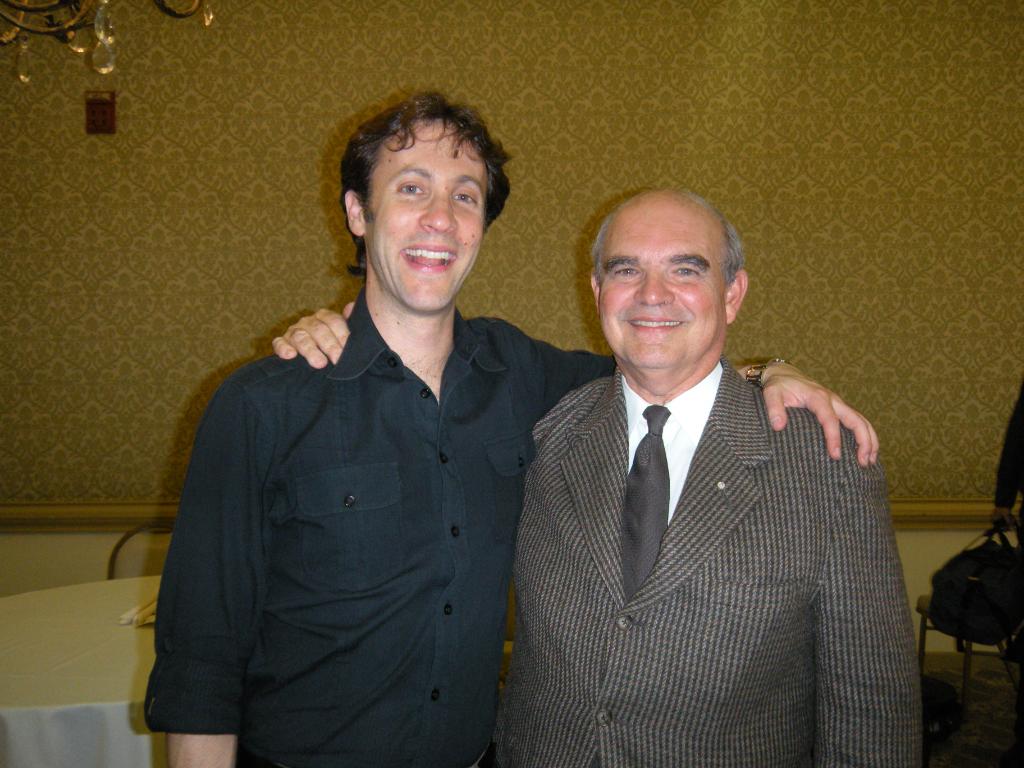
Dr. David Eagleman joined by Emeritus Trustee Emilio F. Romero, MD at the San Antonio TEDx event hosted by Mind Science.
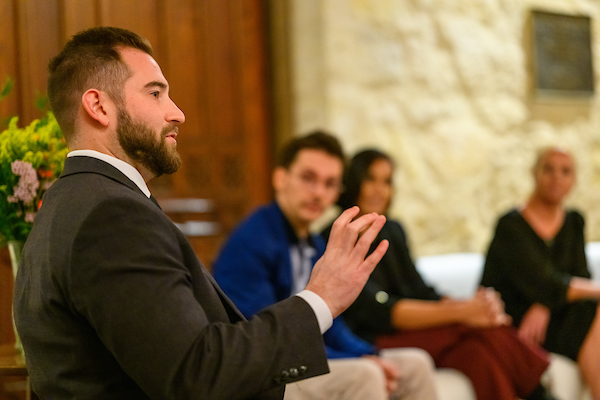
Ben Rein, MSF Chief Science Officer and author of Why Brains Need Friends: The Neuroscience of Social Connection, leads panel discussion with BrainStorm 2024 winners at BrainStorm Night, October 7 2024.
